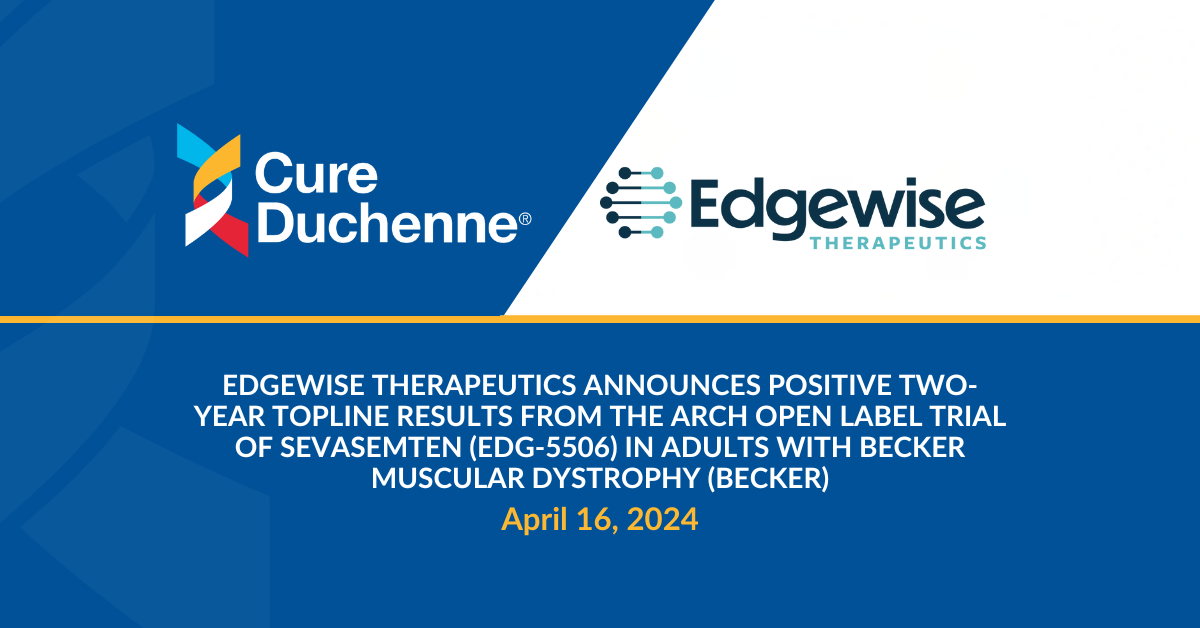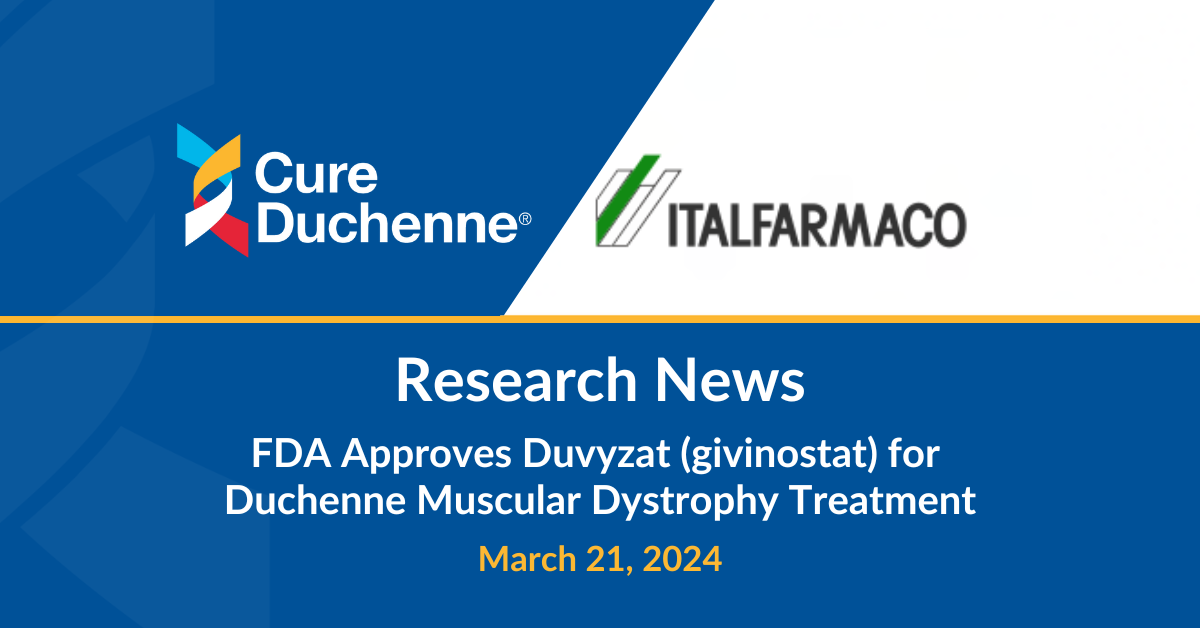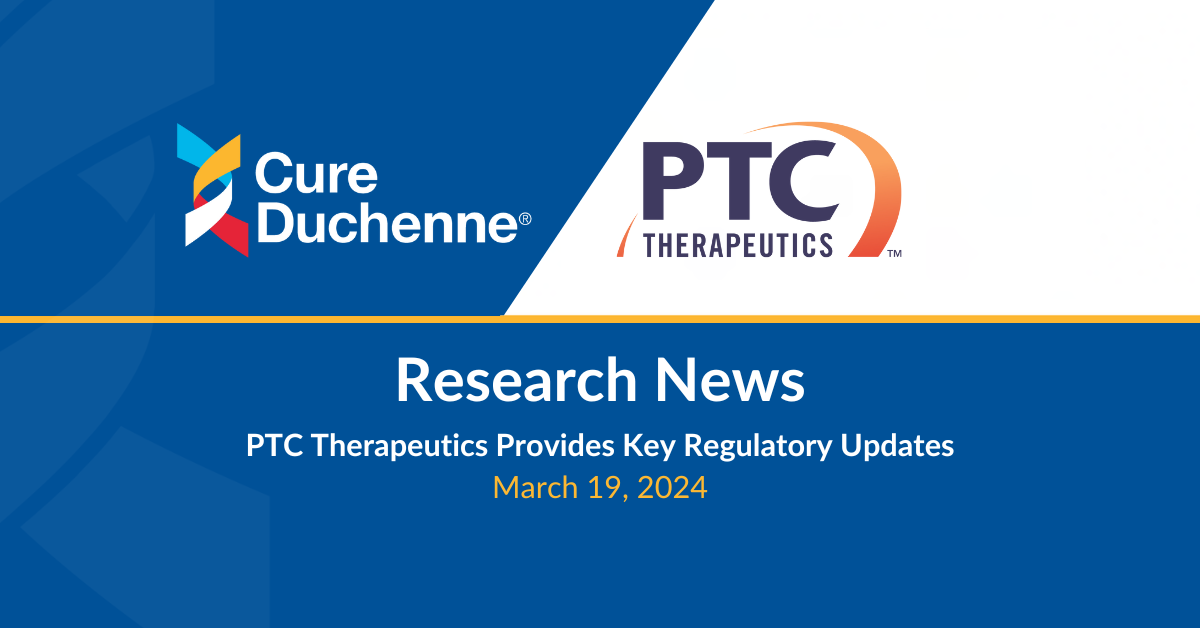DRISAPERSEN TREATMENT FOR DUCHENNE MUSCULAR DYSTROPHY: RESULTS OF A RANDOMIZED, DOUBLE-BLIND, PLACEBO-CONTROLLED CLINICAL TRIAL
 It’s been almost 10 years since CureDuchenne funded a little know biotech company, Prosensa, in the Netherlands. With only $10,000 in our bank account, we committed to fund a $1.3 Million project to develop antisense (exon skipping) for Duchenne. A few years later, venture capital firms validated our investment with several million dollars to continue their research. In 2009, Glaxo Smith Kline committed up to $650 Million to take four of their exon skipping compounds forward.
It’s been almost 10 years since CureDuchenne funded a little know biotech company, Prosensa, in the Netherlands. With only $10,000 in our bank account, we committed to fund a $1.3 Million project to develop antisense (exon skipping) for Duchenne. A few years later, venture capital firms validated our investment with several million dollars to continue their research. In 2009, Glaxo Smith Kline committed up to $650 Million to take four of their exon skipping compounds forward.
Today, GSK released the results of their Phase ll 24 and 48 week data. We are very pleased to report that the results are clinically significant. It’s been a long 10 years and this drug is not yet approved, but we are looking forward to the Phase lll data later this year. CureDuchenne’s chief scientific officer, Dr. Mike Kelly will be summarizing the full results early next week.
I”d like to thank the dedicated group at Prosensa and GSK for their hard work in progressing to this point.
John E Kraus, Claire Wardell, Katie Rolfe, Joanna Nakielny, Naashika Quarcoo, Lia Liefaard, Steve Hood, Allison Morgan, Afrodite Lourbakos, Sjef de Kimpe, Rosamund Wilson, Giles Campion
GlaxoSmithKline, R&D, Research Triangle Park, NC, 27709, 2Prosensa, R&D, Leiden, 2333 CH, Netherlands
Introduction: Duchenne muscular dystrophy (DMD) is a progressive neuromuscular disorder, ultimately lethal, caused by the absence of dystrophin protein due to mutations of the dystrophin gene. The aim of oligonucleotide therapy is to manipulate the post-transcriptional splicing process of the premRNA to restore the reading frame of the mRNA, resulting in a shortened dystrophin protein. Drisapersen is a 2′-O-methyl-phosphothioate oligo designed to skip exon 51 in the dystrophin pre-mRNA. Here we report results of an exploratory, unpowered, double blind, placebo-controlled clinical study of drisapersen.
Methods: Subjects with DMD met the following inclusion criteria: ≥5 years old; ambulant; corticosteroid-treated; rise from the floor ≤7 sec; and a dystrophin mutation correctable by exon 51 skipping. 53 subjects were randomized to 2 drisapersen dosing regimens or matched placebo (2:1). Dosing regimens: continuous (6mg/kg/wk) and intermittent (10-week cycles of 9 doses at 6mg/kg over 6 wks, and 4 wks off drug). Treatment was administered subcutaneously for 48 weeks. The primary objective was to assess the efficacy (6 Minute Walk Distance [6MWD] = primary outcome) of 2 different drisapersen dosing regimens over 24 weeks. Secondary objectives included 6MWD at 48 weeks, various timed function tests, the North Star Ambulatory Assessment [NSAA], muscle strength and safety.
Results: The continuous treatment arm (n=18) showed a clinically meaningful and statistically significant difference from placebo (n=18) on 6MWD at 24 weeks (mean, 35.09m; [95%CI, 7.59-62.60m], p=0.014), with trends supportive of efficacy in other timed function tests and the NSAA. A clinically meaningful difference from placebo (35.84m [-0.11-71.78m], p=0.051) was maintained at 48 weeks. The intermittent treatment arm (n=17) did not separate from placebo at week 24, though by week 48 there was a clinically meaningful difference from placebo on 6MWD (27.08m [-9.83-63.99m], p=0.147), supported by trends in timed function tests and the NSAA. There was little change in muscle strength at either time point for either treatment arm. Drisapersen was generally welltolerated, with the majority of adverse events related to injection site reactions and proteinuria. All patients completed the study.
Discussion: The primary objective was achieved – the continuous treatment arm showed a clinically meaningful and statistically significant difference from placebo on 6MWD at week 24. At week 48, both treatment arms showed a clinically meaningful difference from placebo on 6MWD (supported by improvement in other secondary endpoints). Drisapersen may represent an important treatment option for boys with DMD having mutations correctable by exon 51 skipping.




